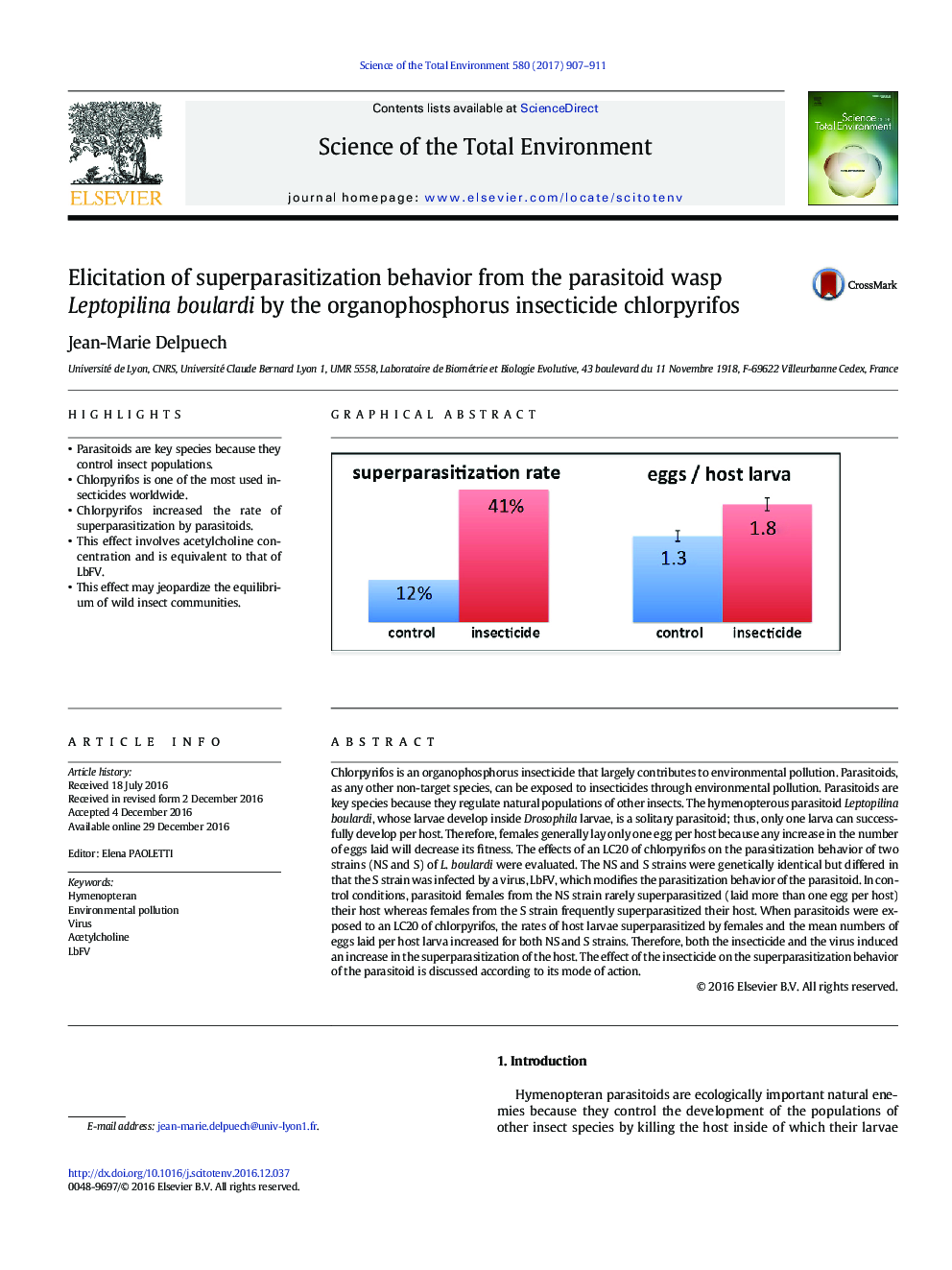| کد مقاله | کد نشریه | سال انتشار | مقاله انگلیسی | نسخه تمام متن |
|---|---|---|---|---|
| 5752128 | 1619711 | 2017 | 5 صفحه PDF | دانلود رایگان |
- Parasitoids are key species because they control insect populations.
- Chlorpyrifos is one of the most used insecticides worldwide.
- Chlorpyrifos increased the rate of superparasitization by parasitoids.
- This effect involves acetylcholine concentration and is equivalent to that of LbFV.
- This effect may jeopardize the equilibrium of wild insect communities.
Chlorpyrifos is an organophosphorus insecticide that largely contributes to environmental pollution. Parasitoids, as any other non-target species, can be exposed to insecticides through environmental pollution. Parasitoids are key species because they regulate natural populations of other insects. The hymenopterous parasitoid Leptopilina boulardi, whose larvae develop inside Drosophila larvae, is a solitary parasitoid; thus, only one larva can successfully develop per host. Therefore, females generally lay only one egg per host because any increase in the number of eggs laid will decrease its fitness. The effects of an LC20 of chlorpyrifos on the parasitization behavior of two strains (NS and S) of L. boulardi were evaluated. The NS and S strains were genetically identical but differed in that the S strain was infected by a virus, LbFV, which modifies the parasitization behavior of the parasitoid. In control conditions, parasitoid females from the NS strain rarely superparasitized (laid more than one egg per host) their host whereas females from the S strain frequently superparasitized their host. When parasitoids were exposed to an LC20 of chlorpyrifos, the rates of host larvae superparasitized by females and the mean numbers of eggs laid per host larva increased for both NS and S strains. Therefore, both the insecticide and the virus induced an increase in the superparasitization of the host. The effect of the insecticide on the superparasitization behavior of the parasitoid is discussed according to its mode of action.
79
Journal: Science of The Total Environment - Volume 580, 15 February 2017, Pages 907-911
